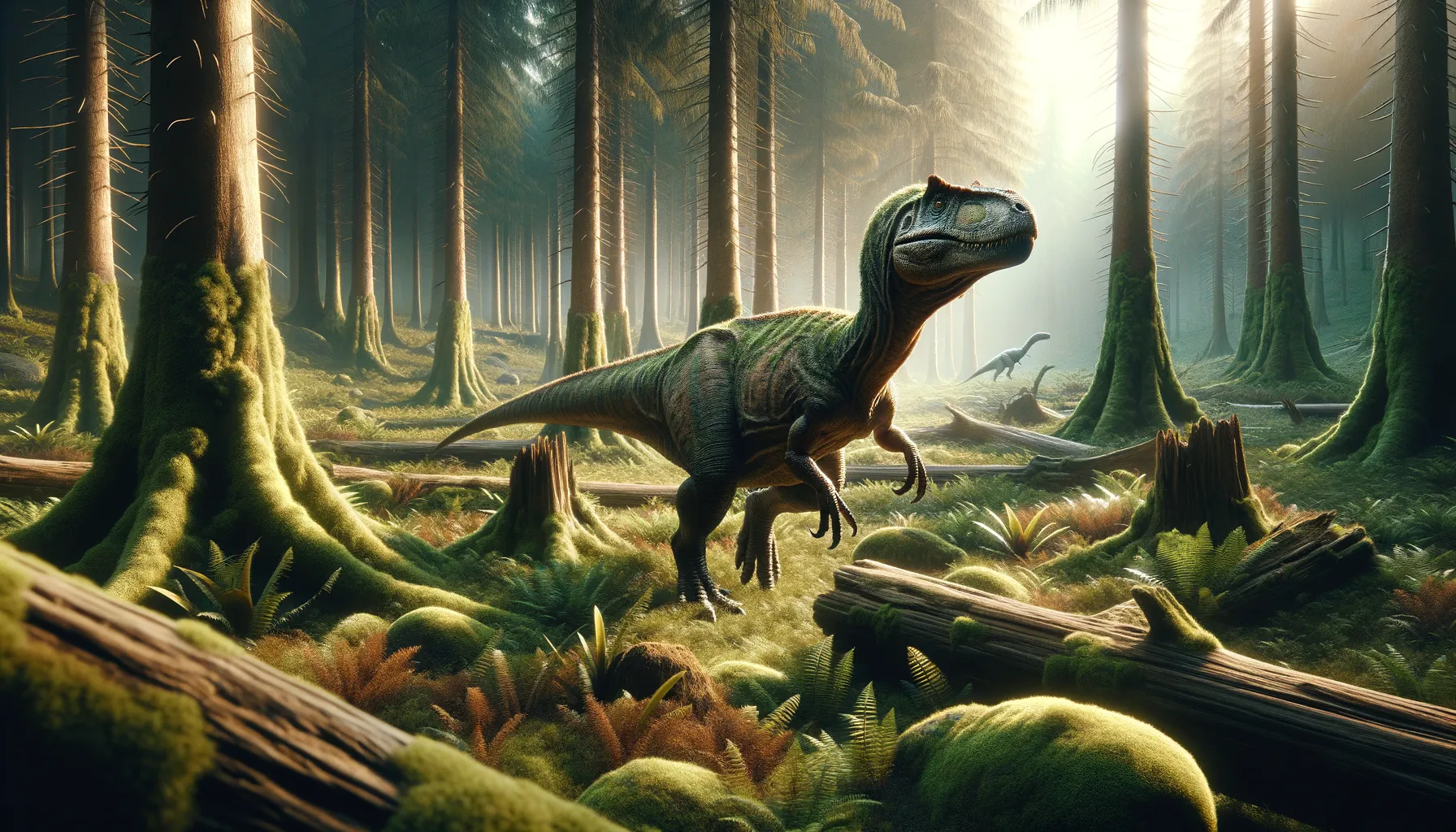
Nanyangosaurus
Bipedal herbivore of the Cretaceous lands
Period
Cretaceous
Length
Roughly 5 meters long.
Height
About 1.5 meters at the hips.
Weight
Approximately 500 kilograms.
Nanyangosaurus was a relatively small, herbivorous dinosaur that roamed the Earth during the Late Cretaceous period. It is part of the ornithischian group, known primarily for their beaked mouths suited for plant-eating. Fossils found in China reveal that it was a bipedal creature, meaning it walked on two legs, which is characteristic of many such dinosaurs from that era.
Diet
Nanyangosaurus primarily fed on plants, using its beaked mouth to efficiently graze on a variety of foliage. Its diet likely included ferns, cycads, and conifers, all common plant types of its time.
Hunting
As a herbivore, Nanyangosaurus did not hunt other animals. Instead, it foraged for plant material using its keen sense of smell and sight to locate nutritious vegetation.
Environmental challenges
Nanyangosaurus lived in a world dominated by larger and more threatening theropods and other carnivorous dinosaurs, requiring constant vigilance to avoid predators. Seasonal changes could impact the availability of its preferred plant food sources, compelling it to adapt its diet according to availability. Paleoclimatology suggests the environment may have undergone gradual changes that would affect food stock, pushing these creatures to migrate or diversify their diet.
Speed
Moderate, suitable for its size and build.
Lifespan
Estimated to be around 20 to 30 years.
First discovery
First found in Henan Province, China, in the 1990s.
Fun Facts
- Nanyangosaurus was a small dinosaur that roamed China during the early Cretaceous period, around 100 million years ago.
- This dinosaur is part of the iguanodontian group, which means it was related to the well-known dinosaur Iguanodon.
- Nanyangosaurus was an herbivore, likely feeding on a variety of plants in the lush environments it lived in.
- It walked on two legs but could also use all four to support itself when browsing for food.
- The name 'Nanyangosaurus' comes from the Nanyang region in China, where its fossils were discovered.
- Unlike some of its relatives, Nanyangosaurus had a more slender build, suggesting it was adapted for faster movement.
- The discovery of Nanyangosaurus helps scientists understand the diversity and evolution of iguanodontian dinosaurs in Asia.
Growth and Development
Nanyangosaurus likely grew rapidly through its juvenile stage to reach a size that would deter predation. This rapid growth might be supported by abundant plant life available in its habitat. As with many dinosaurs, growth rate would slow as it entered adulthood, focusing energy on reproduction rather than further size increases.
Habitat
This dinosaur inhabited what is today known as China, in areas that were lush and supported varied plant life. Its environment was rich in resources, providing ample food and shelter from predators. The climate was generally warmer, with ecosystems ranging from dense forests to open plains.
Interaction with other species
Nanyangosaurus would have shared its environment with other dinosaurs, which included both herbivores and carnivores. Its presence in a diverse ecosystem might have required it to develop certain social behaviors, particularly in staying alert for predators. Competition for resources among herbivores would have been common, affecting their grazing patterns.
Natural lifespan
Nanyangosaurus may have lived for about 20 to 30 years in the wild.
Reproduction
Nanyangosaurus reproduced by laying eggs, likely in nests built with vegetation to provide warmth and protection. After hatching, the young would be vulnerable and required parental care or concealment among dense plant habitats.
Social behaviour
It is probable that Nanyangosaurus developed some degree of social structure, at least in the form of small groups or herds, for protection against predators. These social groups may have functioned cooperatively in terms of foraging strategies and raising young.
Fossil locations
Fossils of Nanyangosaurus have been primarily discovered in the Henan Province of China. These sites have provided significant insights into its morphology and lifestyle. The fossil findings contribute to our understanding of dinosaur diversity in Asia during the Cretaceous period.
